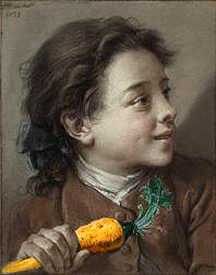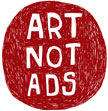3.23.2010
 If I used a textbook in my digital art classroom, it would very likely be Scott Ligon's new Digital Art Revolution: Creating Fine Art with Photoshop. As it is, I'm all over the place with my curriculum; so for my own purposes, it will serve as an excellent reference. Drawing on the work of different artists, Ligon takes us through various tutorials that range from basic to more advanced techniques in Photoshop- and in doing so builds a clear path through what is otherwise an easy program to understand yet hard to master. Below is my interview with Scott:
If I used a textbook in my digital art classroom, it would very likely be Scott Ligon's new Digital Art Revolution: Creating Fine Art with Photoshop. As it is, I'm all over the place with my curriculum; so for my own purposes, it will serve as an excellent reference. Drawing on the work of different artists, Ligon takes us through various tutorials that range from basic to more advanced techniques in Photoshop- and in doing so builds a clear path through what is otherwise an easy program to understand yet hard to master. Below is my interview with Scott:
David Gran: As an art teacher, I appreciate the pacing of the tutorials and ideas for projects, but I especially enjoyed reading your first chapter. You raise some great points about how digital media is transforming art, and I was wondering if we could start our discussion there. To begin, I'd like you to elaborate on the point that the digital media has no technical or aesthetic limitations. Can you address how digital media is unbound by aesthetic limitations?
Scott Ligon: What I would say is that digital art has no inherent (permanent) technological limitations. There are obviously technological limitations at any given time, but they are temporary and they are not inherent characteristics of digital art. Processing power and storage capacity are constantly and exponentially increasing, with no end in sight, while people are constantly developing better and more intuitive interfaces to transfer information between the physical and digital worlds.
Which brings us to aesthetic limitations. Digital technology is just a lot of “one’s and zero’s”. It has no inherent characteristics and no limitations other than the very temporary limitations imposed by the current state of technology. It can look like anything, or have virtually any other set of characteristics beyond the visual image, such as movement, interactivity, or sound.
I think the time is fast approaching when it will no longer be useful to even consider digital art as a medium at all. A medium has characteristics. It has limitations. Digital technology is more like an invisible, enabling structure from which things can be created, sort of like atoms in the physical world.
DG: So what are the implications for art teachers?
SL: This question leads us to another topic I discuss in “Digital Art Revolution”, the blurring of boundaries between mediums to the point of irrelevance.
Just to clarify, it’s not the mediums that are no longer relevant. I’m a big fan of traditional, physical materials in art. It’s the borders between the mediums that are increasingly irrelevant. I’m sitting in my living room with my laptop typing these words, but I could just as easily be using this same device to make a drawing, a video or a song. I can use my laptop to distribute content and make it public. I can disseminate ideas throughout social networks. Whether something is a non-moving image, whether it moves, whether it interacts with the viewer or integrates with their physical environment, whether it tells a story, whether it has sound or is only sound…these are now choices within the same digital toolbox rather than examples of different mediums. A creative person, working digitally, will choose among these and other possibilities based on what is appropriate for their work and their interests.
Creativity is fluid. It’s about synthesis. We take things that already exist and put them together in a new way. Digital technology is also fluid. Digital technology is all about synthesis. Digital art breaks down borders and really echoes and enables the creative process in a very direct way. This should be a fundamental consideration for art teachers.
DG: How must we be reacting to the changes in contemporary art in how we design curriculum?
SL: First of all, I just want to mention that the fundamental building blocks of visual art remain the same. We still use line, color and value. We arrange shapes into a well-considered composition. We respond to an image because it conveys a certain universal quality or feeling to us even while it remains unique. What digital technology has introduced are new possibilities in how these elements can be used, and a subtle but redefining shift of consciousness about how we approach creative endeavors.
We should organize our classes in a way that encourages all of these new possibilities rather than places artificial limitations on our thinking.
DG: What would you say is our responsibility in preparing students with 21st century art making skills?
SL:
• Find a balance between the technical and aesthetic and make sure students understand how these concepts are related. Teach “why-to” rather than just “how-to”.
• Present various creative approaches as possibilities within a continuum, rather than examples of different mediums.
• Foster originality. Encourage and guide each student in exploring and refining a personal, unique approach to their art. This is not just a worthwhile goal from a creative standpoint, it’s also extremely important to a creative career in the 21st century. Thanks to digital technology, most things can be done from anywhere in the world. The person that creates something unique and personal is the person that is irreplaceable.
• Teach students not only how to create their work, but also how to share it with the world. Increasingly, people are doing what they love, giving it away for free through various digital means of distribution, and then gaining public interest to an extent that they begin to generate income from their work. This is quickly becoming a realistic alternative to traditional approaches in establishing a career in art. In fact, I’d say this is probably a more likely path to success than waiting to be “discovered” by someone in a position of power.
Digital distribution of creative content, social networking as a means to disseminate ideas and awareness of creative projects, navigating through interactivity…these are all fundamental characteristics that must be considered when preparing artists for the 21st century. They will become increasingly prevalent as long as there is human civilization.
We need to get our students to consider these possibilities from the beginning, before they have their thinking affected and limited by ideas that are no longer relevant.
Lastly, to broadly generalize, I believe that many schools reward people who are good at sitting still, being quiet, memorizing things and repeating them back. More than ever, we need a generation of young people that are active innovators and creative problem solvers. We live in a time when virtually any information can be quickly accessed. It’s what we do with all that information that will determine our fate and direction as a species. The kids who have the most potential as leaders and innovators are often the ones that are the most disenfranchised by our current cookie-cutter approach to education.
Art teachers are in a perfect position to foster creative thinking and individuality. School administrations could benefit by remembering the value of the arts when determining curriculum.
DG: Thanks, Scott! SCOTT LIGON is the author of Digital Art Revolution, Creating Fine Art with Photoshop (Watson-Guptill/Random House). He is an award-winning digital artist who frequently lectures on the subjects of creativity, filmmaking, and digital art. Ligon is the coordinator for the digital foundation curriculum at the Cleveland Institute of Art. He is also the author/director of the short film Escape Velocity, winner of “Best Experimental Film” at the USA Film Festival in Dallas, which has played in theaters and festivals worldwide and is now available on iTunes through Shorts International. http://www.digitalartrevolution.com
SCOTT LIGON is the author of Digital Art Revolution, Creating Fine Art with Photoshop (Watson-Guptill/Random House). He is an award-winning digital artist who frequently lectures on the subjects of creativity, filmmaking, and digital art. Ligon is the coordinator for the digital foundation curriculum at the Cleveland Institute of Art. He is also the author/director of the short film Escape Velocity, winner of “Best Experimental Film” at the USA Film Festival in Dallas, which has played in theaters and festivals worldwide and is now available on iTunes through Shorts International. http://www.digitalartrevolution.com















I ended up buying the book and think it is rather good.